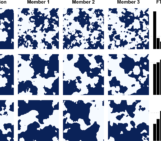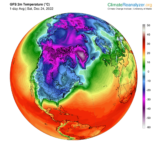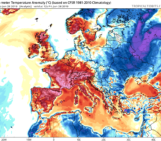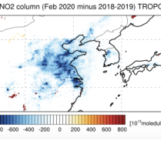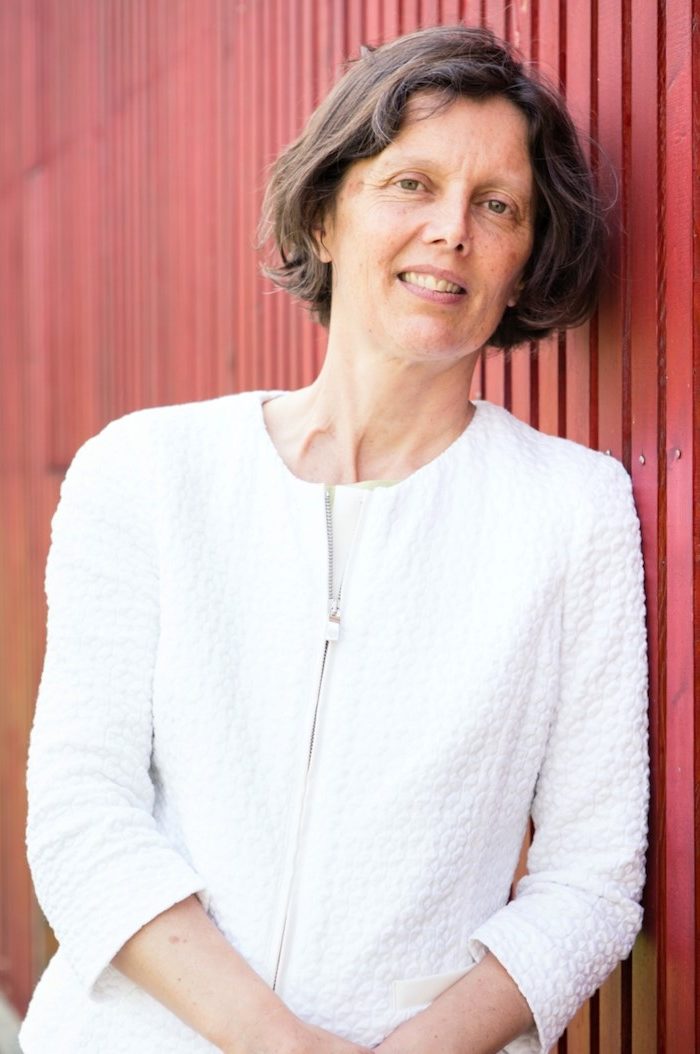
Today’s NP Interviews hosts the 2021 Lewis Fry Richardson Medal Berengere Dubrulle.
Berengere is senior scientist at the Centre National de la Recherche Scientifique and presently Director of the Les Houches Physics School. She received her PhD in astrophysics in 1990 under the supervision of J.-P. Zahn. She is a specialist of turbulence, and its application to astro and geophysical flows using theoretical, numerical or experimental approaches. Her major achievements are about theory of the solar system formation, statistical modeling of large scales and their bifurcations, or mathematical aspects of the small scale structure, in connection with singularities and intermittency. She was involved in the VKS dynamo experiment and in the SHREK superfluid (quantum) turbulence experiment.
1. Just to break the ice and to be obvious: what were your feelings when you received the news that you received the Richardson medal?
Of course, first of all I was very happy. I was also very honored to receive this award because Richardson prize is special to me since he was one of the pioneers in turbulence and I tried to apply many concepts proposed by him one century ago, especially the concept of energy cascade that is continuously present in my career. But I also felt a bit frustrated that I cannot share this award with all my colleagues and collaborators who contributed a lot in my research. Indeed, I have a philosophy of work-life: if you want to go fast, go alone, if you want to go far, go together.
2. You received it for “for outstanding contributions to the field of geophysical and astrophysical turbulence, and for a unique approach to the study of experimental turbulent flows using statistical mechanics”, but why your approach is unique in turbulence?
I am not sure my work is unique in turbulence but it may be original in the sense that it mixes theories, numerics, and experiments. I indeed developed a lot of theoretical tools I applied in experiments and numerical simulations as well as to real-world data. What is great for turbulence is that you can approach it from many aspects, you can look at large vs. small scales, you can apply a lot of tools from mathematics and physics, different concepts from dynamical systems and fractals/multifractals, and so on. I can say that I just used turbulence to do a lot of different things in physics. Indeed I mostly used the same device, the von Karman flow, to do many things in different fields of physics, ranging from climate to astrophysics.
3. What was you first contact with turbulence and why turbulence entered in your life?
That’s an interesting question. My first contact with turbulence was on a rock in a little place named LaFontasse near the Pyrenees where my grandparents had their summerhouse. After sun set we climb on the rock with my cousins and we had the possibility to see the night sky, with its comets, asteroids, the Milky Way. Starting from that I really wanted to study how all that works and I started studying astrophysical turbulence. I discovered that turbulence is a fashinating field since it is the unique case in which we have the equations governing phenomena since 1823 (the Navier-Stokes equations), but we cannot solve them, neither analytically nor numerically! So, we cannot exactly simulate the climate or the motion of galaxies.
Since the start of my carreer my goal is therefore to develop new concepts in turbulence such that Navier-Stokes equations can be simulated in an easiest way on laptop, focusing on properties of turbulent vortices and using mathematics, physics, mechanics, astro-/geo-physics.
4. What were the key people that contributed to increase your motivation on this field?
Oh well, the list is very long so I will make a selection. The first is my PhD advisor Jean-Paul Zahn, an outstanding physicist who tought me that I have to always check the physical meaning of any mathematical results. He was the founder of the speciality I used later in my career, i.e., to use laboratory experiments to deduce important results in natural systems. The second person who was very important for me is Uriel Frisch, the one who told me everything on turbulence starting at beginning of the 1990s. During these years I had the chance meet and work with several important people working in the field of turbulence like Michel Hénon, Yves Gagne and Bernard Castaing. They also taught me how to interact with students. They were very famous but they were also very modest and available for young people. I hope I learned well their lessons! Then, , I also have to thank my young collaborators, all my PhD s and post-docs like Jean-Philippe Laval, Davide Faranda, and many others. They were all important because working with young people increase your enthusiasm and your desire to do. They are the best part of my work! I also have to thank my senior colleagues Francois, Caroline, Sergey, Didier, and so on. I did not mention many others but all together we did go far!
5. Finally, the usual question: what do you wish for the future and how young/established researchers can contribute to the growth of your field and of nonlinear sciences?
What I really wish is less competition, more collaboration. At this time it is like a dream but I hope it can be realized soon in the future. Another thing is to follow your motivation in your field, not for publishing on high factor journals or for being awarded a medal, but for increasing your curiosity and searching for the beauty of Nature.

